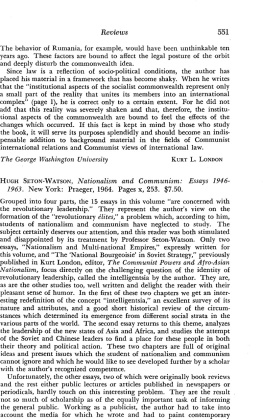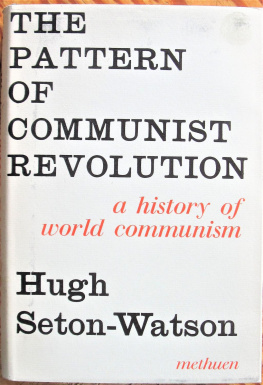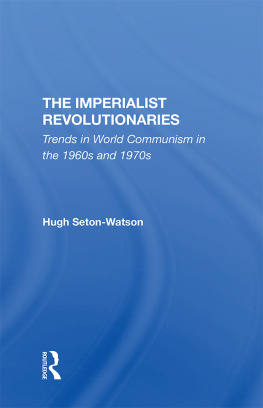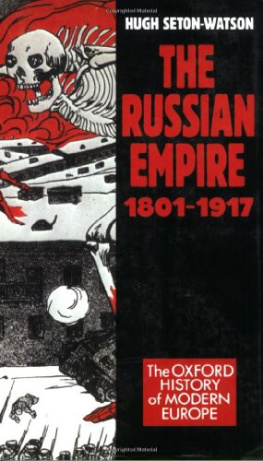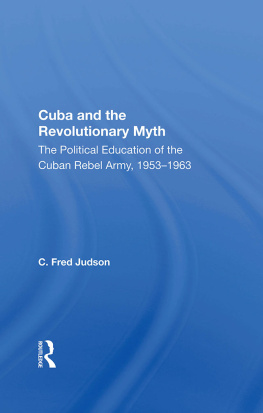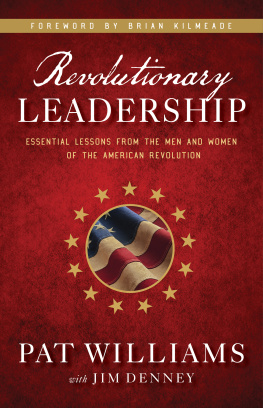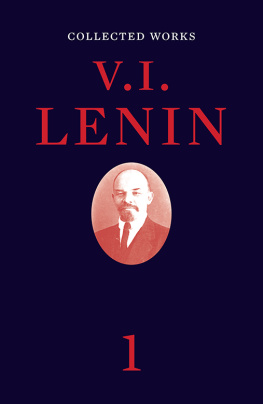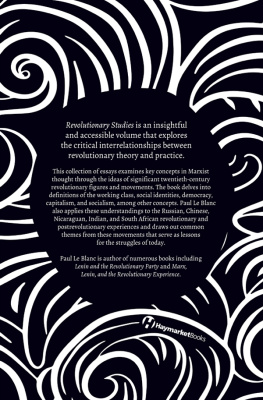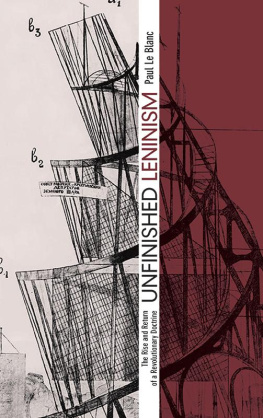First published in 1964 by Methuen & Co Ltd
This edition first published in 2022
by Routledge
4 Park Square, Milton Park, Abingdon, Oxon OX14 4RN
and by Routledge
605 Third Avenue, New York, NY 10158
Routledge is an imprint of the Taylor & Francis Group, an informa business
1964 Hugh Seton-Watson
All rights reserved. No part of this book may be reprinted or reproduced or utilised in any form or by any electronic, mechanical, or other means, now known or hereafter invented, including photocopying and recording, or in any information storage or retrieval system, without permission in writing from the publishers.
Trademark notice: Product or corporate names may be trademarks or registered trademarks, and are used only for identification and explanation without intent to infringe.
British Library Cataloguing in Publication Data
A catalogue record for this book is available from the British Library
ISBN: 978-1-032-12623-4 (Set)
ISBN: 978-1-003-26095-0 (Set) (ebk)
ISBN: 978-1-032-18038-0 (Volume 17) (hbk)
ISBN: 978-1-032-18041-0 (Volume 17) (pbk)
ISBN: 978-1-003-25258-0 (Volume 17) (ebk)
DOI: 10.4324/9781003252580
Publishers Note
The publisher has gone to great lengths to ensure the quality of this reprint but points out that some imperfections in the original copies may be apparent.
Disclaimer
The publisher has made every effort to trace copyright holders and would welcome correspondence from those they have been unable to trace.
First published 1964
1964 by Hugh Seton-Watson
Printed in Great Britain
by the Camelot Press Ltd
London and Southampton
TO DOUGLAS YOUNG
AS A TOKEN OF THIRTY YEARS OF FRIENDSHIP
AND MANY HOURS OF TALK
ON THESE AND KINDRED THEMES
Contents
Preface
PART ONE TWENTIETH-CENTURY HISTORY
Twentieth-century Revolutions
Industrialization and Revolution
Russian Revolutionaries
Hitlers Revolution
PART TWO EASTERN EUROPE AFTER THE WAR
The Danube States in 1946
Czechoslovakia in 1947
Greece in 1948
PART THREE COMMUNISM IN EASTERN EUROPE
The Hungarian Tragedy
The East European Communist Parties, 194458
Five Years after the Hungarian Revolution
PART FOUR INTERNATIONAL PROBLEMS
Soviet Foreign Policy on the Eve of the Summit
The National Bourgeoisie in Soviet Strategy
The Great Schism
Commonwealth, Common Market, Common Sense
Preface
The essays and articles collected in this book are united by the general theme of national and social revolution, which is so obvious a feature of twentieth-century history. Nationalism and Communism are mass movements, in the sense that they express mass discontent and that they mobilize the masses of town and country for action. These essays discuss only certain features of revolutionary movements. Little is here said about the economic sufferings or aspirations of peasants or workers. I have written something about these things elsewhere,1 though of course I cannot claim to have covered more than a small part of the ground, and indeed even the enormous literature which has appeared in the last half-century in many different languages on the social problems of peasants and workers is still inadequate for so vast a theme. But I think that I am at least entitled to claim that I do not lack interest in social problems, or underrate the role of the masses in revolutionary movements.
These essays are, however, concerned mainly with revolutionary leadership. If no revolutionary movement can prosper without mass support, it is equally true that none can even begin without leadership. The formation of revolutionary lites, the social conditions and the personal motives which impel men to revolutionary leadership, are still insufficiently understood. Western writers tend to consider this problem in terms of the rise of a middle class. This, it seems to me, is a mistake, largely due to a natural tendency to regard the formation of a bourgeoisie in Western Europe, between the end of the Middle Ages and the end of the eighteenth century, as the normal pattern in the historical development of societies. The truth is rather that the formation of a bourgeoisie is an exceptional and uncharacteristic phenomenon, confined to a part of the European continent and its successor societies in North America and the Pacific. The social group which has played the leading part in political movements in underdeveloped societies, from post-Petrine Russia to mid-twentieth-century tropical Africa, has not been a middle class but an intelligentsia. The difference is more than semantic. The argument is worked out in some of the essays in the first part of this book.
Especially in my Eastern Europe between the Wars (1945), The Decline of Imperial Russia (1952) and Neither War nor Peace (1960).
The date and place in which each essay appeared is stated in a footnote at the beginning of each. There are only minor verbal changes in the texts. Some titles have been changed. In certain cases explanatory footnotes have been added. The essay on Nationalism and Multi-national Empires appears here for the first time. It is based in part on lectures given in Paris, Stockholm and Ankara. Two short essays on Russian Revolutionaries and Hitlers Revolution are reviews of two outstanding books - Il popolismo russo by Professor Franco Venturi of Turin and Die Auflsung der Weimarer Republik by Professor Karl Bracher of Bonn.
The area in which I have personally had most opportunity to see national and social revolution at work is Eastern Europe, with which the second and third parts of this book are concerned. The second consists of articles written during journeys to Eastern Europe in the period of Communist seizure, or - in the case of Greece -attempt at seizure, of power. The third part consists of essays on the development of the Communist rgimes in these countries during the last fifteen years, as seen from a distance.
In the fourth part the subject is essentially the impact of the revolutionary forces of nationalism and Communism on international politics - on the relations between the Soviet Union and the West and between the Soviet Union and China, and on the situation of Britain in world politics in 1963.
In conclusion I should like to express my thanks to the editors of the periodicals, mentioned in the text, from which most of these articles have been reprinted, and to the colleagues and students who during two decades have provided so much stimulus to thought.
One: Twentieth-century History

